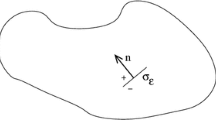Abstract.
Edges are useful features for structural image analysis, but the output of standard edge detectors must be thresholded to remove the many spurious edges. This paper describes experiments with both new and old techniques for: 1. determining edge saliency (as alternatives to gradient magnitude) and 2. automatically determining appropriate edge threshold values. Some examples of edge saliency measures are lifetime, wiggliness, spatial width, and phase congruency. Examples of thresholding techniques use: the Rayleigh distribution to model the edge gradient magnitude histogram, relaxation labelling, and an edge curve “length”–“average gradient magnitude” feature space.
Similar content being viewed by others
Author information
Authors and Affiliations
Rights and permissions
About this article
Cite this article
Rosin, P. Edges: saliency measures and automatic thresholding . Machine Vision and Applications 9, 139–159 (1997). https://doi.org/10.1007/s001380050036
Issue Date:
DOI: https://doi.org/10.1007/s001380050036




